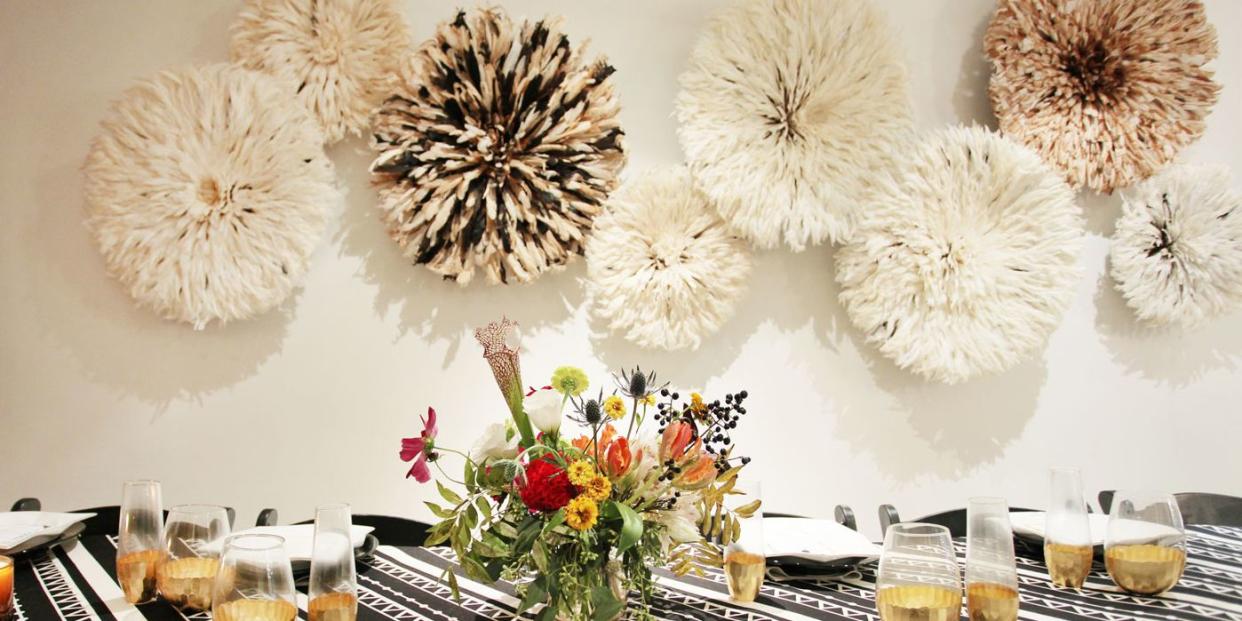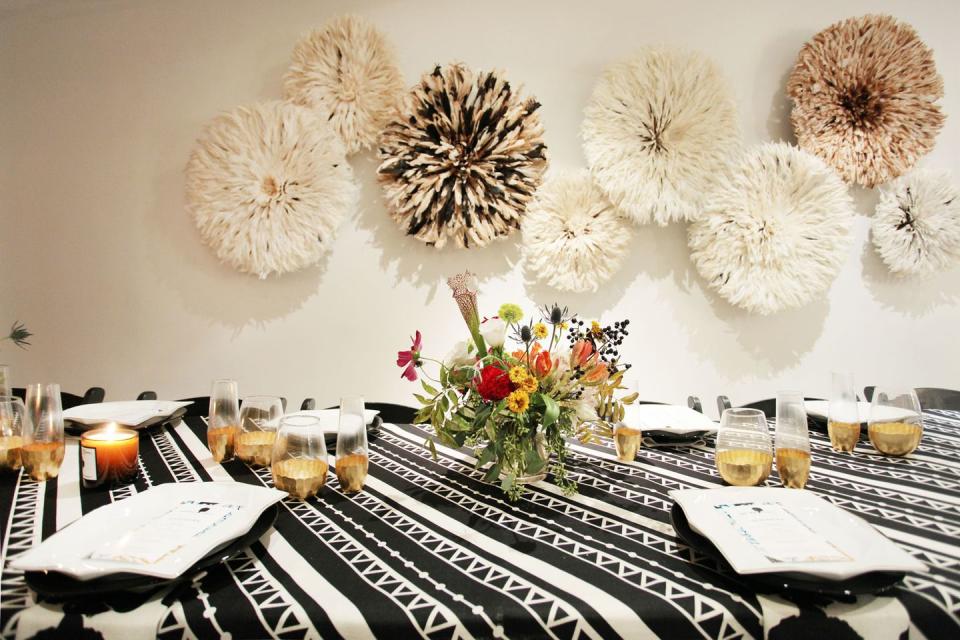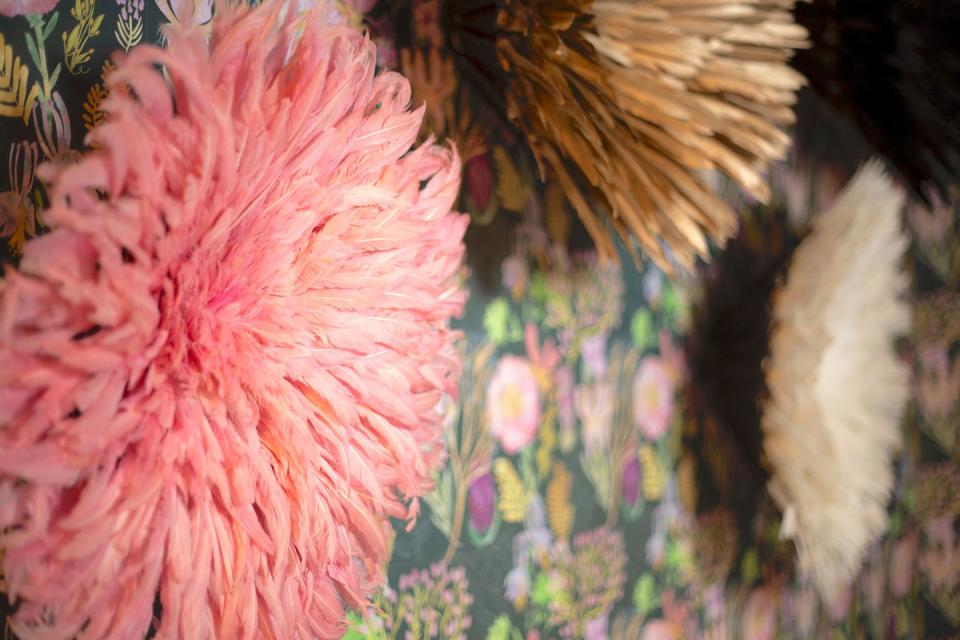The Rich History Behind Juju Hats, the Feathered Pieces Common as Wall Decor

Jeanine Hays is an author, designer, and the cofounder—with her husband, Bryan Mason—of the Brooklyn-based lifestyle and design brand AphroChic. Here, she dives into a common design accent with a storied past: Juju hats.
You’ve seen them dozens of times: lush, feathered pieces in bright jewel tones or layers of creamy neutrals. Chances are, you’ve spotted them hanging on the walls of homes in the pages of a magazine, in your Pinterest feed, or on your favorite designer’s Instagram page. If you’ve ever wondered what they are or where they’re from, these gorgeous feathery pieces hail from the Bamileke people of Cameroon and are known as juju hats, or tyn.
Beautifully handcrafted, juju hats have a long history to them. Though they're beloved by designers for the way they can transform any room, it’s important to note that juju hats are so much more than wall decor. They represent centuries of deep ceremonial tradition that survived waves of German, French, and British colonization to find new life as one of today’s trendiest pieces in home decor. But that’s just the tip of the iceberg.
First things first: Juju hats are, in fact, hats. A thick mix of colorful feathers, handwoven with raffia and backed with cedar wood, each hat unfolds into a wearable piece intended for ceremonial occasions. The Bamileke first arrived in the Cameroon during the 11th century. Over time, the culture expanded into numerous kingdoms supporting dozens of dialects as well as diverse religious and cultural beliefs. The Bamileke are especially known for their beadwork, showcased most stunningly at masquerades, where tyn originated and where they are still used to this day.

Second fact: In Bamileke culture, juju hats are reserved for royalty. Like most Bamileke art, juju hats are created specifically for use at royal festivals. Every Bamileke polity is headed by a chief or king. The king is attended by a committee known as the mkem or “the assembly of holders of hereditary rights.” Each member of this council is known to have brought wealth and distinction to his state and each acts as the head of a particular society tasked with certain duties within the kingdom. Such responsibilities may be military, economic, legal or otherwise.
Every two years, the mkem hold special meetings at which the wealth of the king is displayed. At these ceremonies the members of the mkem and their followers don masks appropriate to their societies. The most venerated of these, the elephant and leopard masks, are reserved only for the king and for the members of the Kuosi and the Kemdje, both warrior societies. It is with these masks that tyn or juju hats are most commonly seen, though occasionally they are also worn alone.
Want to score amazing deals on home decor? Stick with us—we’ll give you all of our secrets.

Fact number three: Juju hats are stunning works of art. Each one is made by hand and can take an artisan weeks to complete. As works of art that have special cultural significance and meaning, it’s important to display them as such. Tyn should be placed on the wall in a respectful manner. They should not be relegated to a bathroom, folded, or placed on the floor. If you have a traditional art collection, consider placing your hat in a shadow box, with a placard offering information about the piece and its origins. Juju hats can also be displayed on stands. A more modern showcase of these pieces can place several hats together in a variety of sizes and colors to highlight the variety.
As with any work of art, you’ll want to make sure that your juju hat is authentic. While there are a lot of “DIY juju hat” kits out there and many appropriating these distinct cultural pieces, it’s important to support the artisans who have been making them for generations, and who are keeping the tradition alive. You can find authentic hats in some of our favorite marketplaces below:
Follow House Beautiful on Instagram.
You Might Also Like

